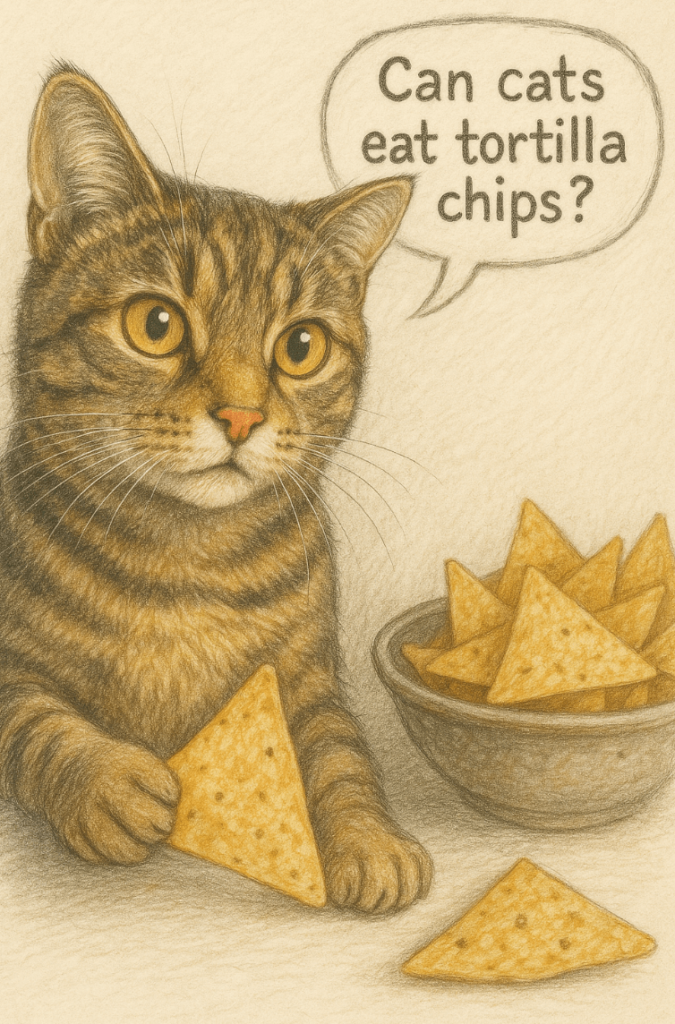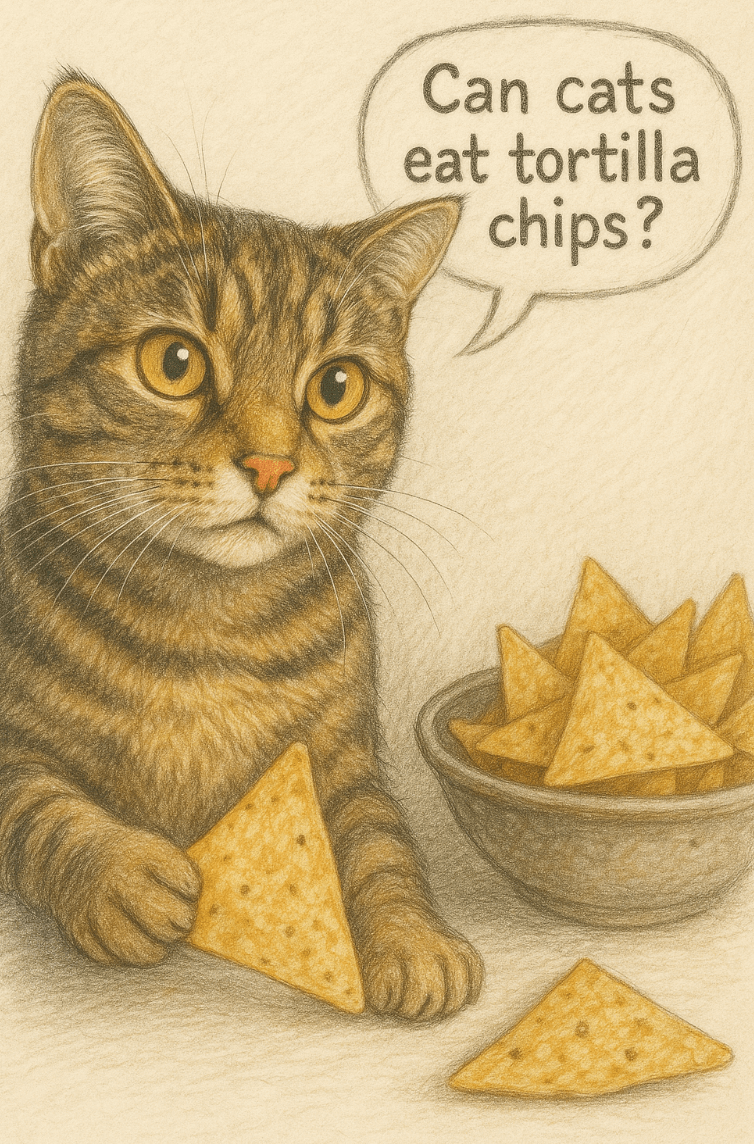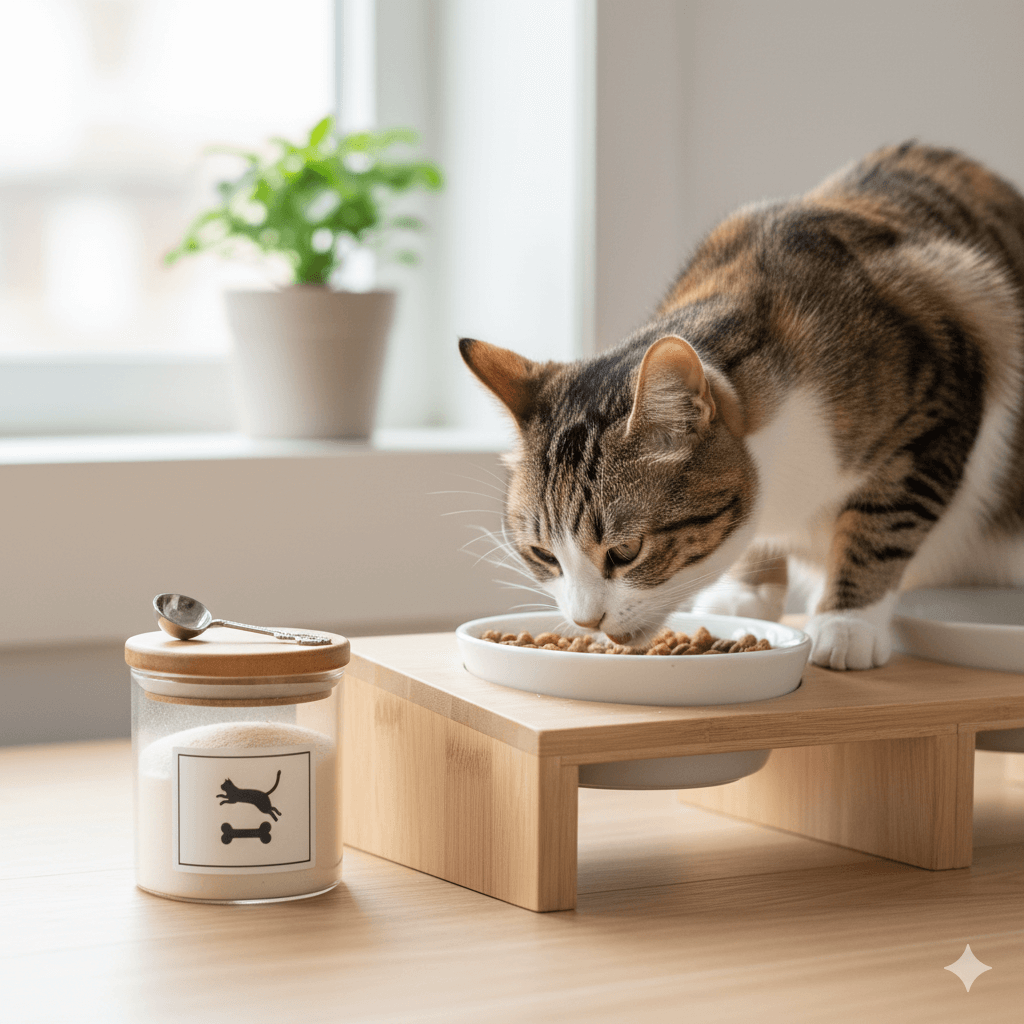Can Cats Eat Tortilla Chips?
Cats are curious creatures, and it’s not uncommon for them to show interest in the snacks we enjoy. If you’ve ever caught your feline friend eyeing your plate of tortilla chips, you might wonder whether it’s safe to share this popular snack with them. While tortilla chips may seem harmless, they can pose risks to your cat’s health if consumed in large quantities or regularly. Understanding what makes tortilla chips potentially harmful—and what alternatives are safer—can help you make informed decisions about your cat’s diet. In this blog post, we’ll explore everything you need to know about cats and tortilla chips, from potential dangers to healthier treat options.
Why Tortilla Chips Are Not Ideal for Cats
While an occasional nibble might not cause immediate harm, tortilla chips are not a suitable snack for cats due to their ingredients and texture. Here are some reasons why tortilla chips should be avoided.
High Salt Content:
Tortilla chips are often heavily salted, which can lead to sodium poisoning in cats if consumed in excess.Toxic Ingredients Like Garlic or Onion Powder:
Many flavored tortilla chips contain garlic or onion powder, both of which are toxic to cats and can damage their red blood cells.Difficult to Digest:
The hard, crunchy texture of tortilla chips can be challenging for cats to break down, potentially causing choking or digestive blockages.High Calorie and Low Nutritional Value:
Tortilla chips offer no nutritional benefits for cats and can contribute to unhealthy weight gain if eaten regularly.Risk of Allergic Reactions:
Some cats may have sensitivities or allergies to corn or wheat, common ingredients in tortilla chips, leading to gastrointestinal upset.
Given these risks, it’s best to avoid feeding tortilla chips to your cat altogether.
Signs Your Cat May Have Eaten Tortilla Chips
If your cat has managed to sneak a few tortilla chips, it’s important to monitor them for signs of distress or adverse reactions. These symptoms may indicate that they’ve consumed something harmful.
Excessive Thirst or Urination:
Increased water intake or frequent urination could signal sodium poisoning from the high salt content.Vomiting or Diarrhea:
Gastrointestinal upset is a common reaction to consuming inappropriate foods like tortilla chips.Lethargy or Weakness:
A sudden lack of energy or difficulty moving may indicate toxicity or dehydration caused by salt.Difficulty Breathing:
Labored breathing can occur if your cat experiences an allergic reaction or ingests a choking hazard.Loss of Appetite:
Refusal to eat is a red flag that your cat may be feeling unwell after consuming something harmful.
If you notice any of these symptoms, contact your veterinarian immediately to ensure your cat receives proper care.
Check this guide 👉Can Cats Eat Oregano? Best 7 Expert Tips!
Check this guide 👉Can Cats Eat Caramel? Best 7 Expert Tips!
Check this guide 👉Can Cats Eat Cookies? Best 7 Expert Tips!

Safe Snacks for Cats | Foods to Avoid Giving Cats |
|---|---|
Plain cooked chicken (no seasoning) | Tortilla chips with salt or spices |
Small pieces of plain fish | Chips containing garlic/onion powder |
Cat-safe fruits like blueberries | High-sodium snacks like pretzels |
Plain pumpkin puree | Processed foods with artificial additives |
Small amounts of plain yogurt | Spicy or flavored chips |
Healthier Alternatives to Tortilla Chips for Cats
If your cat craves a crunchy snack, there are plenty of safer and healthier options to satisfy their curiosity without risking their well-being.
Cat-Specific Treats:
Look for treats specifically formulated for cats, ensuring they meet dietary needs and safety standards.Plain Cooked Vegetables:
Small pieces of steamed carrots or green beans make excellent low-calorie snacks.Freeze-Dried Meat Snacks:
Freeze-dried chicken or turkey provides protein-rich nutrition without added salt or spices.Homemade Cat Biscuits:
Bake simple, cat-safe biscuits using ingredients like oats, liver, or salmon for a tasty homemade treat.Interactive Feeding Toys:
Use puzzle feeders or treat-dispensing toys to engage your cat mentally while rewarding them with healthy snacks.
These alternatives allow you to indulge your cat’s cravings safely and responsibly.
How to Prevent Your Cat from Eating Harmful Foods
Preventing accidental ingestion of unsafe foods is key to keeping your cat healthy and happy. Follow these tips to minimize risks around human snacks like tortilla chips.
Store Food Out of Reach:
Keep snacks like tortilla chips in sealed containers or cupboards where your cat cannot access them.Supervise Snack Time:
Avoid eating near your cat unless you’re certain the food is safe for them to sample.Teach Boundaries:
Train your cat to stay away from countertops or tables where food is prepared or served.Provide Distractions:
Offer engaging toys or activities to redirect your cat’s attention away from your meals.Educate Family Members:
Ensure everyone in your household understands which foods are off-limits for your cat.
By taking these precautions, you can protect your cat from accidentally consuming harmful foods.
Common Misconceptions About Feeding Human Foods to Cats
Many pet owners mistakenly believe that sharing human foods with cats is harmless, but this isn’t always true. Here are some common myths debunked.
“A Little Won’t Hurt Them”:
Even small amounts of salty or processed foods can lead to serious health issues over time.“Cats Can Eat Anything Dogs Can”:
Cats have different dietary requirements than dogs and are more sensitive to certain ingredients.“Natural Ingredients Are Always Safe”:
Ingredients like garlic and onions, though natural, are toxic to cats and should be avoided.“Treats Are Just for Fun”:
Regularly feeding unhealthy treats can contribute to obesity and long-term health problems.“Cats Know What’s Good for Them”:
Cats don’t instinctively know which foods are safe, making it your responsibility to guide their diet.
Understanding these misconceptions helps prevent accidental harm to your cat.
Nutritional Needs of Cats Explained
Cats are obligate carnivores, meaning their bodies require specific nutrients found primarily in animal-based proteins. Here’s what makes their dietary needs unique.
High Protein Requirement:
Cats need diets rich in animal protein to support muscle development and overall health.Essential Amino Acids Like Taurine:
Taurine deficiency can lead to serious health issues, including heart disease and vision problems.Limited Carbohydrate Tolerance:
Unlike humans, cats derive little energy from carbs and struggle to process large amounts.Hydration Through Food:
Cats naturally obtain moisture from their prey, so wet or hydrating foods are ideal for preventing dehydration.No Need for Salt or Seasonings:
Cats’ kidneys are highly sensitive to excess sodium, making unseasoned foods the safest option.
Meeting these nutritional needs ensures your cat thrives on a balanced and species-appropriate diet.
Fun Ways to Treat Your Cat Without Risking Their Health
Treating your cat doesn’t have to involve risky human foods—you can find plenty of creative and safe ways to reward them instead.
DIY Catnip Toys:
Stuff homemade fabric toys with catnip for a fun and stimulating treat experience.Frozen Treats:
Freeze small portions of plain yogurt or tuna juice in ice cube trays for a refreshing snack.Puzzle Feeders:
Hide dry kibble or treats inside interactive toys to encourage mental stimulation during mealtime.Grow Cat Grass:
Planting cat grass indoors gives your cat a safe way to nibble on greens and aid digestion.Special Play Sessions:
Sometimes, quality time and play are the best rewards, strengthening your bond without involving food.
These ideas allow you to spoil your cat while keeping their health top of mind.
Frequently Asked Questions About Cats and Tortilla Chips
Can cats eat plain tortilla chips without salt?
While plain chips are less harmful, they still lack nutritional value and can pose choking hazards. It’s best to avoid them entirely.
What should I do if my cat eats a tortilla chip?
Monitor your cat closely for symptoms of distress and consult your vet if you notice any unusual behavior.
Are corn-based foods safe for cats?
Corn itself isn’t toxic, but its high carbohydrate content offers no nutritional benefit and can upset sensitive stomachs.
Can kittens eat tortilla chips?
Kittens are even more vulnerable to harmful ingredients, so tortilla chips should never be given to them.
How can I tell if my cat has sodium poisoning?
Symptoms include vomiting, diarrhea, excessive thirst, lethargy, and seizures; seek veterinary care immediately if suspected.
Prioritizing Your Cat’s Health Over Curiosity
While it’s tempting to share our favorite snacks with our furry companions, foods like tortilla chips simply aren’t suitable for cats. Their sensitive digestive systems and unique dietary needs mean that even seemingly harmless treats can cause harm. By understanding the risks and opting for safer alternatives, you can ensure your cat stays healthy and happy. Remember, your cat relies on you to make the best choices for their well-being—so always prioritize their health over indulging their curiosity.
Understanding Bone Supplement for Cats: Best 7 Expert Tips! – Safe, vet-approved guidance for strong feline bones & balanced nutrition.
Bone Supplement for Dogs: Best 7 Expert Tips! – Expert guide to calcium, collagen & bone health for every life stage.
Understanding Can Cats Get Sunburn: Best 7 Expert Tips! – Protect your feline from UV damage with vet-backed prevention strategies.
How to Train a Seizure Alert Dog: Best 7 Expert Tips! – Learn expert-backed steps to nurture natural instincts into reliable, life-saving seizure alerts.





